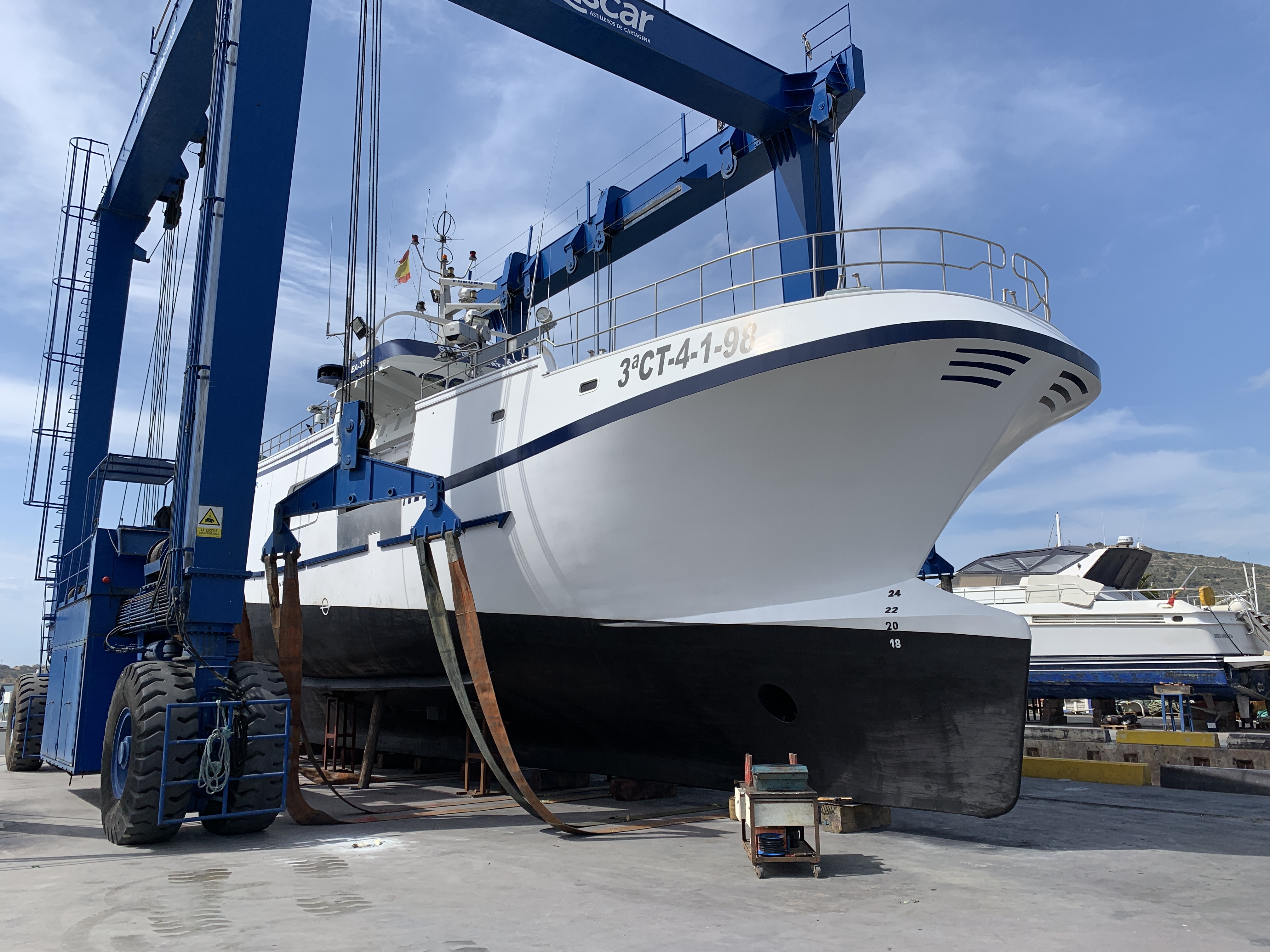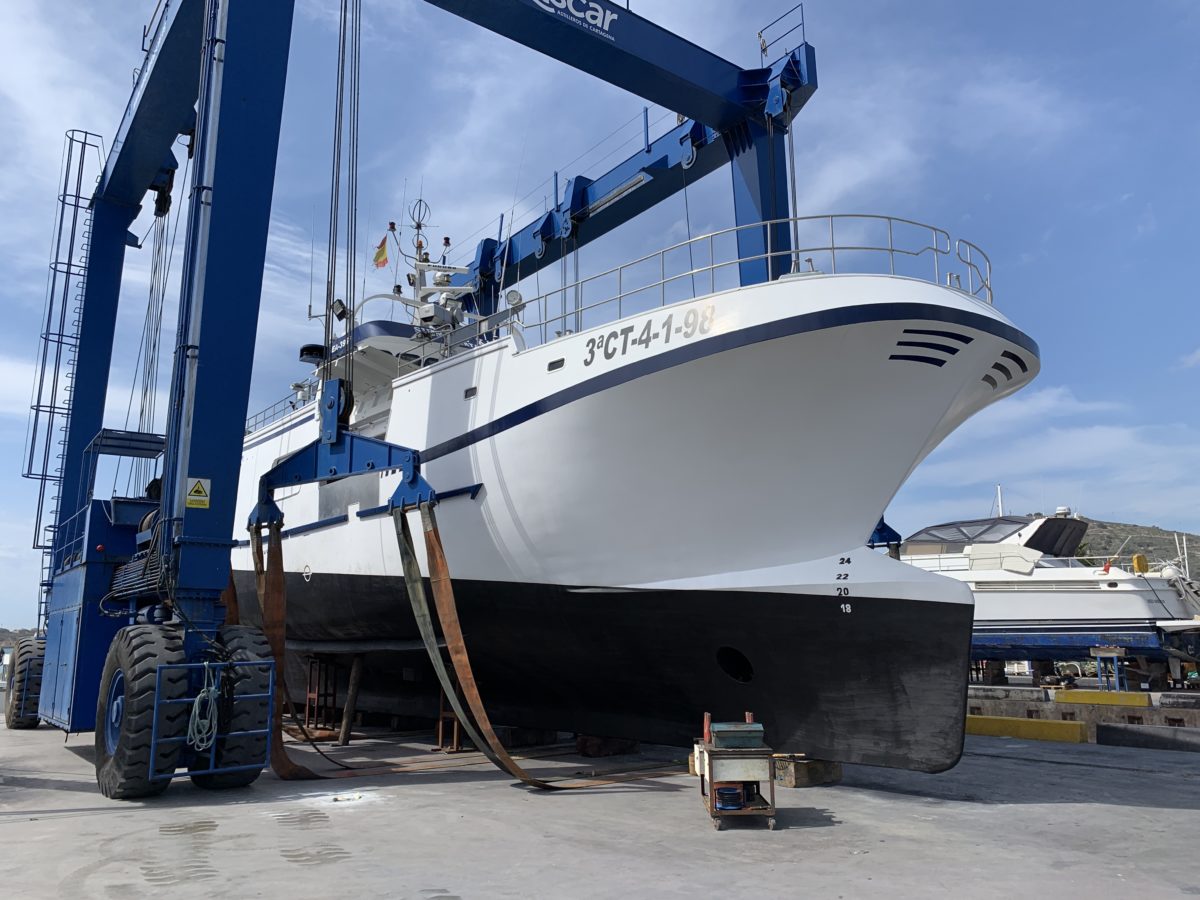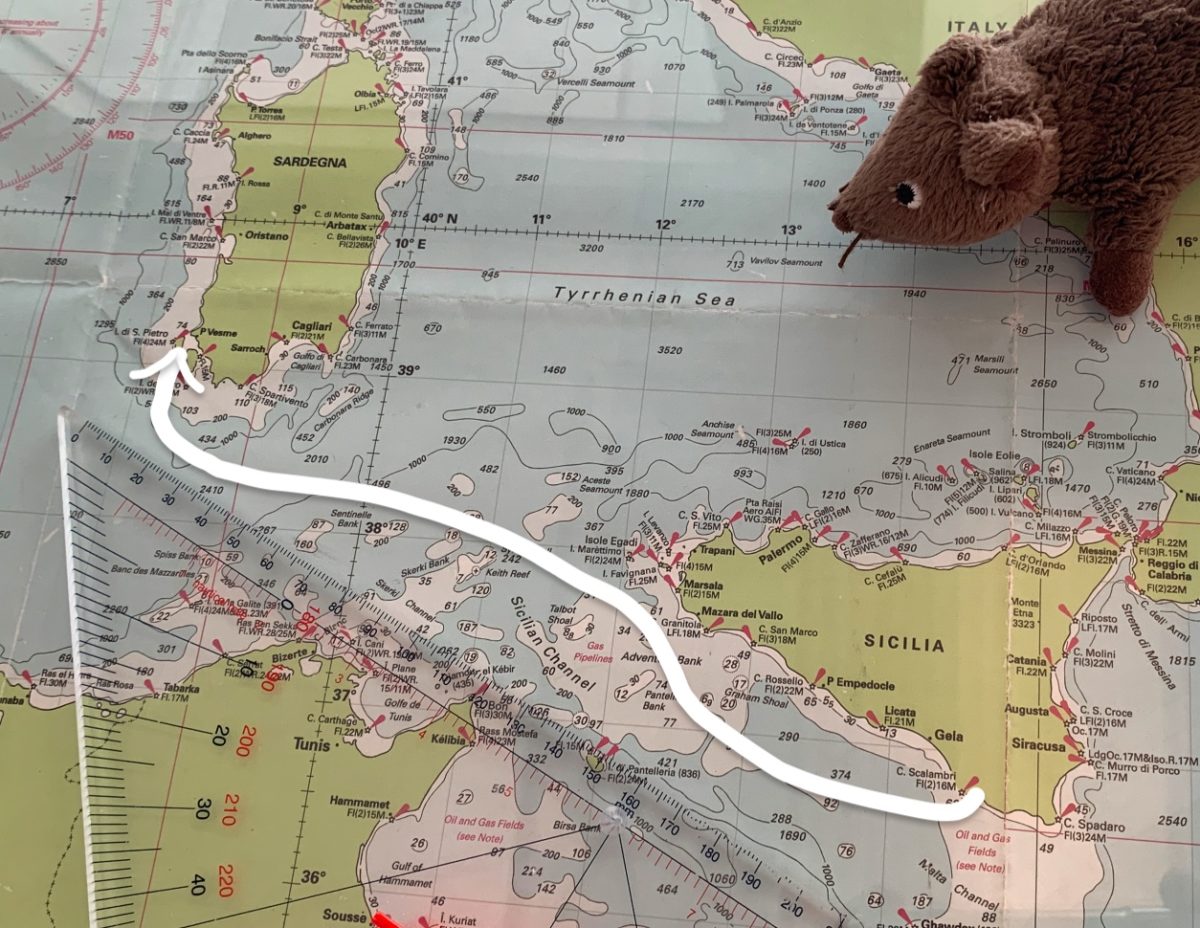Boat yards have their Charme. Not necessarily in a warm and fuzzy feeling way, but interesting. That aside, we have some work to do. While the boat is messy anyway, we use the opportunity for repairs we didn’t dare to do in a clean marina.

The Admiral works on our ball bearing sail cars. Those are the devices which connect the main sail to the mast and allow it to slide up and down – or so goes the theory. Up yes, down not so much.
The Admiral cleans, inspects, oils and reinsert the cars onto the track. Very fiddly as the balls don’t want to follow the orders of the Admiral.

I dropped the rudders with the help of a friend. We want to inspect the shafts and ensure that we do not have any signs of damage from stray electrical currents. You might remember we had some wiring errors. We will also inspect the saildrives. All non bronze thruhulls will be exchanged in order to be safe.

We are working at the dreaded windows again. They started to leak shortly after the repair in Southern France. The 1.7m long windows became unglued in heavy weather. Catamarans flex in waves and and the windows are simply too long. We cut them in half and glued the two pieces into the cutout. The cut center rests now on a fiberglas bridge with a 10mm gap. There should be ample room for them to move when underway. The glue becoming undone should be a thing of the past – I know famous last words 🙂

Our crash boxes had water leaking in from the so called dolphin stays. We will reinforce the area with some layers of roving glas fiber mats and should be fine afterwards.

I am heading back to the boatyard, got called and have to break of here.
Bye




Doesn’t look like much fun, what you are doing in beautiful Cartagena. Hope you can still enjoy the evenings in a nice tapas bar!
Thanks for commiseration. Right now it’s slightly downhill again. We have metal parts in our 200h old saildrives 🙁
Our joys are Tapas downtown and Cava delight sessions.